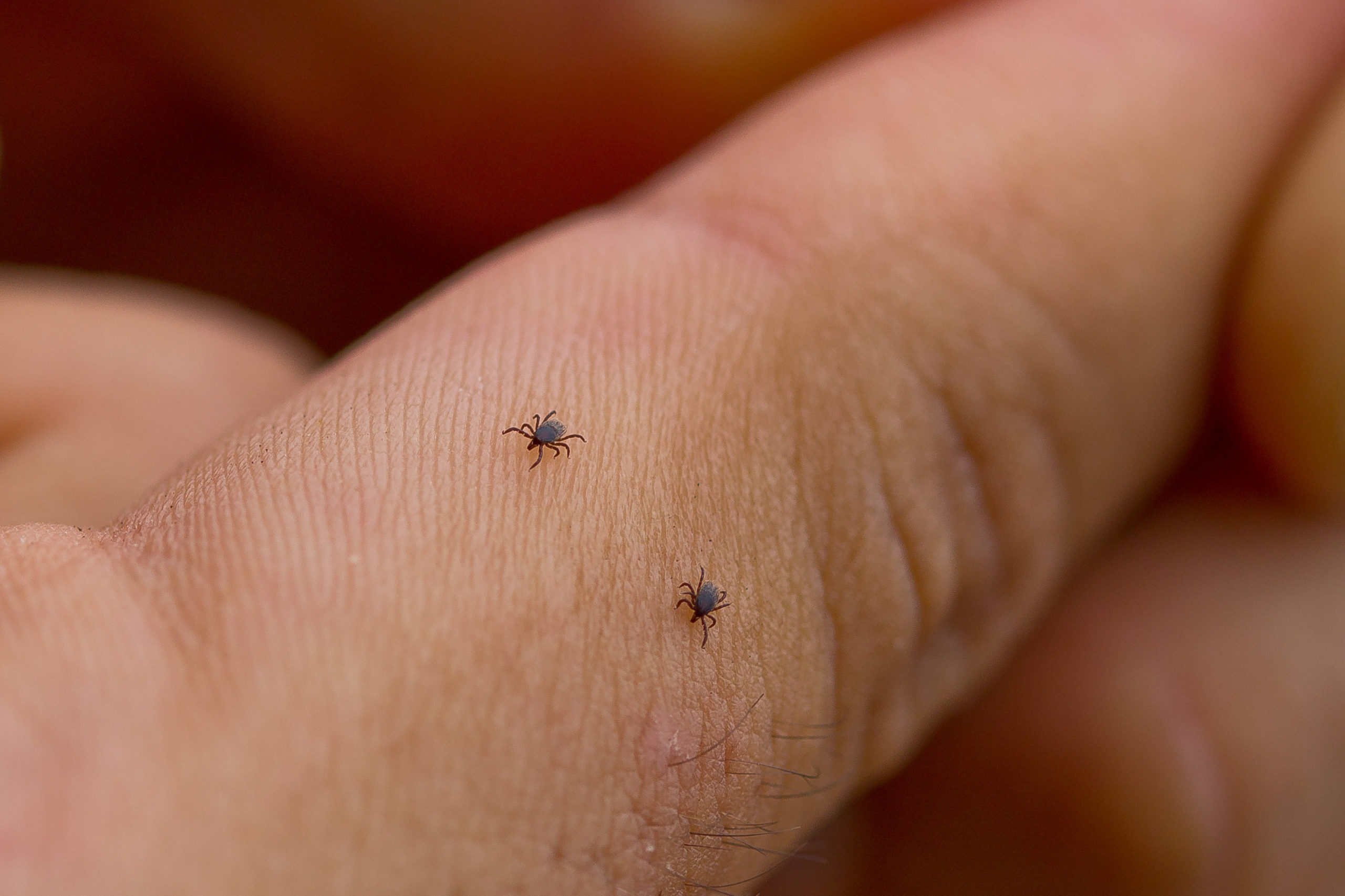
Ticks are a pest to horses and humans alike and can cause not only skin irritation but also serious diseases. Brush up on how to identify and prevent tick-borne diseases, as well as how your veterinarian might treat these illnesses, to protect your horse and be prepared in the event of infection.
Equine Tick-Borne Diseases
Lyme disease ranks among the most prevalent tick-borne diseases affecting horses. “Lyme disease is a bacterial condition that less commonly causes clinical signs in horses, though many horses are exposed to this pathogen called Borrelia burgdorferi,” says Sarah F. Colmer, VMD, Dipl. ACVIM-LAIM, fellow at the University of Pennsylvania’s New Bolton Center, in Kennett Square. “Deer ticks transmit Borrelia to horses from reservoirs involving mice, rats, and deer as well as other larger mammals. The organism can spread through the tissue and blood to different parts of the body.”
Horses also contract the tick-borne bacterial disease anaplasmosis, caused by the organism Anaplasma phagocytophilum, says Colmer. “Deer ticks are thought to be the primary method by which horses contract the disease and from small mammals like mice and rats,” she explains. “Anaplasmosis is often seasonal due to the higher tick activity, and Anaplasma targets a horse’s white blood cells.”
Identifying and Treating Lyme Disease and Anaplasmosis in Horses
Although horses in different regions of North America might show evidence of exposure to B. burgdorferi on a variety of blood tests, most of these horses do not develop clinical signs of the disease.
“For instance, neurologic Lyme disease is actually considered extremely rare, even if many horses in a particular area have been exposed to the causative agent (B. burgdorferi),” explains Colmer. “But, very rarely, some horses may even go on to develop a neurologic disease. When they do, they may become uncoordinated (ataxic), display neck stiffness, experience eye problems (uveitis, or inflammation of a portion of the eye), and a variety of other signs. Causation of lameness because of Lyme infection is unfortunately not well documented.”
Confirming Lyme disease with testing can also be difficult. Veterinarians might perform a cerebrospinal fluid analysis in addition to blood testing, but no test is completely reliable, says Colmer. “The ideal treatment for equine Lyme is not well established but often involves the use of antibiotics.”
In horses with anaplasmosis, clinical signs can be variable. “Some horses can have very mild signs, while others may be more severe,” says Colmer. “Fever is one of the most common signs, in addition to lethargy, depression, and inappetence. Limb swelling may also be present, and less common presentations include neurologic signs and muscle disease, among others.”
Veterinarians diagnose anaplasmosis via a blood smear test or a polymerase chain reaction test. “Treatment typically includes the use of antibiotics, such as tetracyclines,” she adds.
Risk Factors for Tick-Borne Diseases
Time of year and region are strong determining factors for horses most at risk for tick-borne diseases. “Early spring and late fall are the seasons they are most at risk, but they can be exposed to ticks year-round,” says Colmer. “Ticks can be found on horses even during the winter following a thaw.” Horses in regions where ticks are more commonly seen (such as the Northeast) are more likely to be exposed to the causative agents of Lyme and anaplasmosis, she adds.
Preventing Lyme and Anaplasmosis in Horses
To prevent tick-borne diseases frequently check your horses coat, mane, and tail for ticks and remove them as soon as possible. Some products such as wipes or sprays can effectively repel ticks temporarily. “There is not a tremendous amount of research on managing environmental tick control in horses, however, general suggestions to decrease tick exposure include maintaining horses in regions that are dry, sunlit, regularly disturbed (by humans and horses), and clean,” says Colmer. “Areas that border woodlands may be associated with more tick exposure, so preventing deer on the property (when possible) may also help.”
Take-Home Message
Horses—especially those in the northeastern United States—often face tick-borne diseases such as Lyme disease and anaplasmosis. Clinical signs of these diseases can range from fever to neurologic deficits (in rare cases). If you suspect your horse has a tick-borne disease, contact your veterinarian for an examination, diagnosis, and treatment before it worsens. Use prevention methods when possible to reduce your horse’s overall risk of tick-borne illness.



